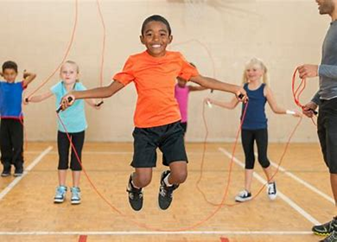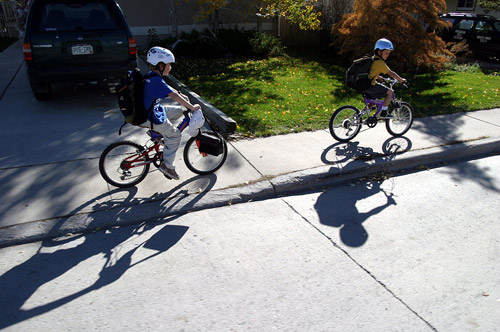How much physical activity do children need?
Let’s take a look at the two primary kinds of physical activity and help you think about how much your kids are getting.
Today we continue our series on the many contributing factors to childhood overweight and obesity by looking at the role physical activity plays. This monthly series will continue throughout 2022 while we shine a light on the impact different behaviors make in weight and health. Previously, we discussed screen time and how it can steal time away from physical play and cause overeating when used with meals or snacks. We looked at portion sizes and showed how they have increased in recent years. Today we’re going to take a look at physical activity and share with you how much kids really need to stay healthy.

According to the CDC, children and adolescents ages 6-17 years old need at least 60 minutes of aerobic physical activity daily. Aerobic activity means the kind of activity that gets your heart rate up for a sustained period of time and can change how you breathe. The term “aerobic” actually means “with oxygen,” which means that breathing controls the amount of oxygen that can make it to the muscles to help them burn fuel and move. Some examples of aerobic activity include running, swimming, riding bikes, jumping robe, or even just playing. Games like tag, frisbee, soccer, walking, running, riding bikes, dancing, or jump rope all qualify as aerobic exercise if done vigorously.
The CDC also recommends activities that are bone- and muscle- strengthening at least 3 days a week. Bone- and muscle-strengthening physical activity include weight-bearing and resistance exercises – those that force you to work against gravity or against another kind of weighted pull. For kids, activities like tennis, soccer, baseball/softball, jumping, riding bikes, and climbing are all examples of bone-strengthening activities. This CDC page lists more examples of both of these kinds of activities, and as well as ways to encourage your child to get active and ways to incorporate physical into your child’s life.

As of 2020, less than a quarter of children and adolescence aged 6 to 17 years met the minimum requirement of 60 minutes of aerobic physical activity a day. Certainly, restrictions brought on by the COVID-19 pandemic played a role in kids becoming more sedentary, but the problem started long before. As of 2017, only about 50% of high school students participated in muscle strengthening activities on 3 or more days per week. With only 50% of high school students attending a physical education class on an average week, PE programs are receiving less and less funding and attention than ever before. Physical activity has been shown to improve cognitive function, mental health, bone health and even reduce adiposity- or fat storage. Daily physical activity in children improves brain function, attention spans, and even test scores. With a decrease in the number of PE classes offered or required in schools, there are fewer opportunities for students to reach the physical activity levels required for optimal health and physical development. A reduction in kids’ physical activity leads to increased risk for overweight and obesity, high blood pressure, diabetes, poor cardiovascular health and even osteoporosis. While some of these issues may not show up while they are young, the cumulative impact of lower physical activity can lead to increased poor health risks as they get older. Creating good physical activity habits when children are young pays on in the present and the future and helps instill long-lasting behaviors for life-long healthy impact.
Jump IN regularly shares the 5-2-1-0 concept of healthy habits, a simple way to remember the steps to creating a healthy lifestyle. In addition to the reminder, we’re including here a way to track your 5-2-1-0 habits everyday. By using the 5-2-1-0 guidelines, it can be easy to remember the minimum recommendations for kids and adults to live healthy lives.

Topics: 5210, Physical Activity
Subscribe for more
Want more ideas for healthy schools, workplaces, child care providers, and families? Subscribe to our blog for weekly tips delivered right to your inbox!
It's Every Kid Healthy Week! NEXT »
Distinguished Award for Work on Healthy Schools Goes to MSD Pike Superintendent Young
